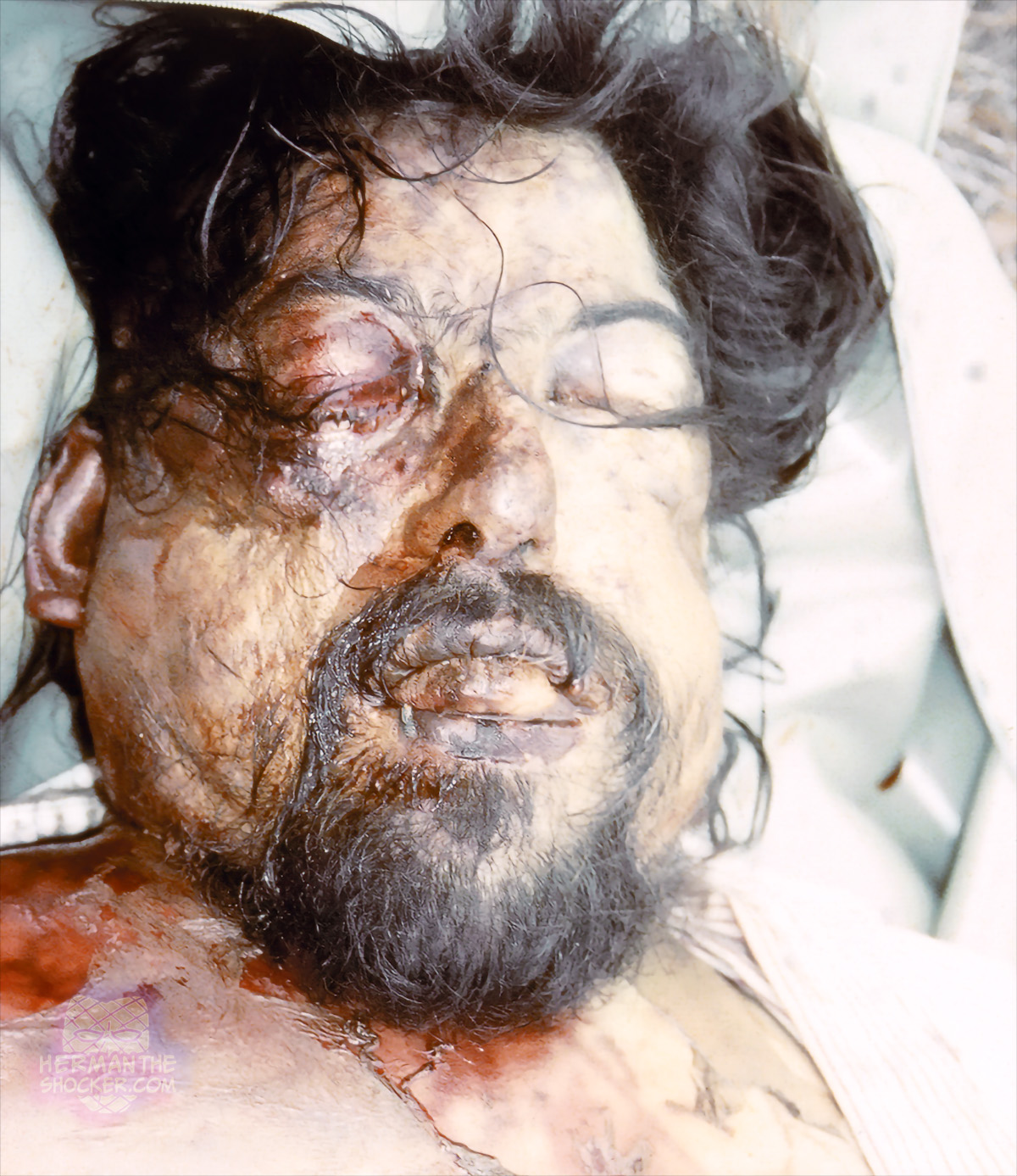When attempting to identify the remains of an unknown decomposed individual, it may be necessary to deflesh the skull. This man was assaulted by unknown means. He was found in a state of mild decomposition (Fig.1) which became more advanced by the next morning, even with refrigeration (Fig.2). At autopsy, epidural and subdural hematomas, as well as acute and healing skull fractures and remote craniotomies were found (Fig.3a). In figure 3b, note the large composite calvarial graft in the left frontal, temporal, and parietal regions. Defleshing of the skull provided for a more accurate and detailed recording of identifying features. When necessary, fractured or fragmented cranial remains can be repaired with glue to provide better visualization of injuries.
Medical examiners and forensic anthropologists are often faced with the difficult task of removing soft tissue from the human skeleton without damaging the bones, teeth, and, in some cases, cartilage. The most commonly used forensic methods for removing human soft tissue from remains include simmering in hot water, dish detergent with or without enzymes, diluted household bleach under a vented fume hood, or dermestid beetles (family Dermestidae).
Tissue can be removed by soaking/macerating in large water-filled containers for weeks or months or manually removed with a knife, scissors, or scalpel. Remains may also be allowed to decompose/putrefy naturally (e.g., the “Body Farm” at the University of Tennessee, Knoxville). A combination of one or more of these methods may be used, or the remains may be soaked in household bleach straight from the bottle (3–6% sodium hypochlorite). While the method of choice depends on many variables, including the extent of bodily decomposition, and time constraints associated with the case (police and medical examiner), whether to use bleach or not is a controversial topic among practitioners because it can potentially damage bone and inhibit DNA extraction.
Latest posts










